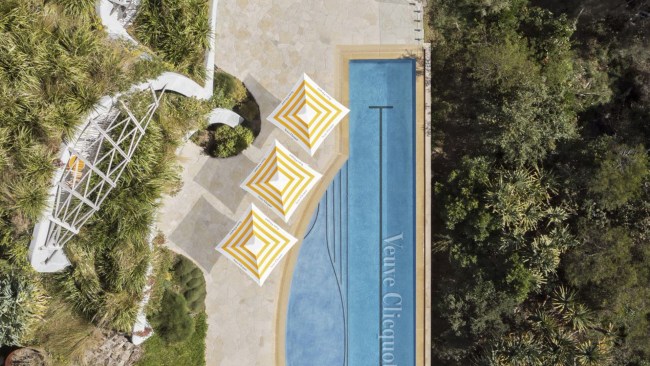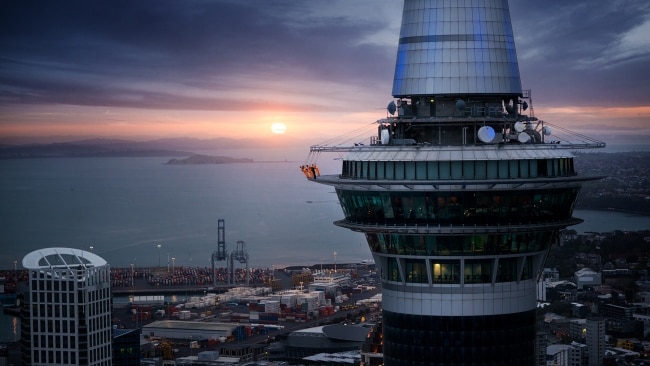Aman: amazing locations, beautiful design and remarkable service
The world’s most exclusive resort chain is expanding and evolving.

On the only occasion on which I met Adrian Zecha, the legendary founder of Amanresorts — still arguably the ne plus ultra of unutterably beautiful, uncompromisingly exclusive hideaway hotel brands — our conversation turned to woven string bracelets.
I had recently stayed at Amanbagh in a remote valley in rural Rajasthan, one of the loveliest hotels in Aman’s exceptional portfolio, where on arrival, guests are anointed with a tilaka (the mark made in a red paste on your forehead), garlanded with marigolds and have red braids tied around their wrists that you are advised will protect you and bring you luck as long as they’re left in place until they fray and fall off. (The holiday was indeed blissful and untroubled — but back in wintry London, I’m afraid I snipped it off and did not notice a reversal in fortune.)
Zecha, I noticed, was wearing a number of such bracelets. I asked him if he found they worked. He smiled and responded with a tale of a man who reputedly rides the New York subway, shredding The New York Times into tiny pieces and sprinkling them like crumbs “to ward off the elephants”. “Elephants?” mystified passengers counter. “You don’t see them on the subway.” “Precisely,” says the man with a knowing look.
But then Zecha was always a maverick, a Dutch-Indonesian journalist turned publisher turned consultant to the hotel industry who, back in 1988, opened Amanpuri on a densely wooded promontory on the Thai island of Phuket. The retreat, it’s safe to say, recalibrated discerning travellers’ expectations when it came to luxury — a term the company’s management prefers to avoid. “We don’t like the word luxury,” says its chief executive, Olivier Jolivet. “Everything is luxury today. In France there is a saying: Le luxe est une affaire d’argent. L’elegance est une question d’education [Luxury is a matter of money. Elegance is a question of education]. We would rather be thought of as elegant than luxurious.”
Certainly this chimes with Zecha’s original ethos. According to his diktat, there would be no logos, no formal check-in procedure, and guests would not be required to sign for anything they ordered. Instead of guestrooms, they would stay in discreet pavilions or villas. Service would be telepathic in its ability to second-guess guests’ every whim. “I want to make very, very clear: I claim no new invention,” Zecha, who almost never grants interviews, once said. “Little inns have always been around, and they’ve always been the best places to stay. The only thing we’re doing differently is making a business out of them.”
That business grew and was sold last year for $US358 million to a consortium of investors (now bought out) led by Russian construction magnate Vladislav Doronin. It has not been a straightforward takeover, however. Rather an acrimonious and widely reported dispute with another former investor continues to grind through the courts. But under Doronin’s chairmanship, the Aman brand is beginning to show signs both of exponential expansion and diversification
Its first uncompromisingly urban high-rise hotel, a project begun when Zecha was still in charge, recently opened at the top of the Otemachi Tower in Tokyo’s business district. By Christmas, a golf resort will open in the Dominican Republic (not a nation one associates with high-net-worth travellers). It will be followed, early next year, by a second Japanese property, this time a hot-spring resort overlooking Ago Bay (known as the Bay of Pearls) in Ise Shima National Park, 25 minutes by helicopter from Nagoya, near the small city of Shima where next northern spring’s G7 summit will be held.
As Doronin says when we meet in Aman’s London office, “We are now global: we range from Utah [where Amangiri is a striking property] to Tokyo.” Next year, there will be 30 Aman hotels in 21 countries. Within the decade, “Maybe 10 or 15 more: in Africa [Gabon and Mozambique are mentioned], Latin America [potential ventures in Argentina, Brazil, Peru and a tented camp in the Galapagos], the Middle East, China ... and some urban developments. Tokyo is achieving very good results so we want to concentrate on major cities: London, New York, Shanghai, Hong Kong.”
Don’t hold your breath, though. As Jolivet explains, “We always have about 50 projects under consideration. Out of those, we will enter some kind of agreement on maybe 20. And out of those, construction will start on five.” For he and Doronin are at pains to emphasise that Aman’s core values — which the latter defines as, “Amazing locations, beautiful design and remarkable service: a combination that makes you feel nice and is very pleasant to stay in, where you feel totally relaxed so you recover very quickly” — will not change. He may want to make the company more profitable: “Occupancy is [already] higher because we have a very good new team,” he notes. But it’s not just about money. He too, I notice, is wearing a beaded dharma bracelet on his right wrist.
Indeed before long he is telling me not just about the “happy” atmosphere he discerns at Aman Tokyo, but about his interest in qijong, the ancient Chinese system of breathing, meditation and endurance that he practises under the tutelage of a Chinese “monk”, a “master” who cannot merely manipulate time — “two hours is like five minutes” — but materials. To wit there is a terrifying clip on YouTube of Doronin working out, so to speak, in which the sharp end of a spear is rested against his throat as its shaft is snapped and he cracks marble tiles against his skull, all with scarcely a grimace.
Born in Leningrad, Doronin left the Soviet Union aged 22 in 1985, the year Gorbachev came to power, to work as a commodity broker in Geneva. By the early 1990s, he was living in Hong Kong and taking holidays at Amanresorts’ properties, though in those days there were barely half a dozen of them, mostly in Indonesia.
“It was a unique experience for me,” he says of his first stay at Amanpuri. “I was very impressed.” After which, as he puts it, he “started to get addicted, so when I scheduled my travel I would try to find an Aman wherever I was going. I became an Amanjunkie. Has he a favourite? “I like very much Amanjena, Amanyara, Amangiri ...” He tails off at Aman-i-Khas, a tented camp on the edge of India’s Ranthambore National Park.
In 1993, however, having returned to Russia, he founded Capital Group, Moscow’s leading real estate developer, which has completed more than 70 major construction projects. Moving into the hospitality industry was, he says, a natural progression. “I had learned the business by building and developing hotels in Moscow and always thought I would like to buy a hotel chain.”
Not that he plans radically to transform Aman. Rather his intention is “to make it a better, more 21st-century company and to use new, talented architects”. He won’t name names, but clearly cares about design.
He is, however, prepared to talk up John Heah — “He’s very talented. I’m sure he’s going to be a big success” — the Hong Kong-born, London-based architect of Amanera, which opens on the cliff above the mile-long beach near Playa Grande on the northern coast of the Dominican Republic this northern winter. With a backdrop of the Cordillera Septentrional mountains, its 25 sea-facing casitas are set amid 810ha, 20 per cent of it rainforest, another 150ha of which is a golf course originally designed by Robert Trent Jones as the “Pebble Beach of the Caribbean”. Ten of its 18 holes are directly “on the water,” Doronin enthuses. Is he a keen golfer? I ask, noting that there’ll also be a golf course at Amanemu in Shima. “I play, yes. But the problem with golf is that you need to have a lot of time, and I’m quite busy.”
Golf may not hitherto have been a pastime readily associated with Aman, but as Doronin points out, the original Aman regulars are the far side of 50 now. Does he worry that its demographic is ageing? On the contrary, for their children are now Amanjunkies too, and their grandchildren will soon be if the kids’ clubs that several resorts are introducing, meet expectations. “They’re very discreet,” says Jolivet. And low-tech. “No video games or anything.” At Amanyara in Turks & Caicos, for instance, “We’ve done some things with National Geographic.”
Having previously worked for the family-friendly all-inclusive Club Med, one might suppose Jolivet’s appointment as CEO last year was a sign that Doronin wanted to broaden Aman’s appeal to a wider though still big-spending constituency (Aman rates tend to start at four figures). In fact, though, Jolivet was hired by Zecha and has been with Aman since 2008, one of the few senior management staff to have survived the regime change and clearly the custodian of Aman’s brand values.
So what is it, does he believe, that defines an Aman? “First, space,” he says. “Space informs everything. Second is intimacy. Even though you have space, you still want to be pampered, to feel comfortable. Number three is outstanding service. But lest this sounds as though Jolivet has memorised a checklist, he is quick to stress that actually at an Aman nothing comes as standard. “There are no standardised rooms, no standardised dimensions or designs. Everything is different. Everything is unique … When you go to Aman you feel like you’re at home.”
TELEGRAPH MEDIA GROUP
Checklist:
Founded in 1988 by Adrian Zecha, Aman names its properties for the Sanskrit word “aman”, meaning “peace, security, shelter”. Among its favoured architects is Australia’s Kerry Hill, who has designed the new Aman Tokyo. More: aman.com.


